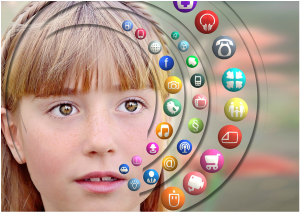 Nate Riggs of NR Media Group Nate Riggs of NR Media Group
DoYo Live, the Valley’s first digital marketing and interactive media conference, will take place at YSU’s Williamson College of Business on Aug. 4.
The one-day event will feature panels, vendors, interactive displays and keynote talks from two of the top minds in digital and inbound marketing. Nate Riggs, inbound marketing guru and founder and CEO NR Media Group based in Columbus, will deliver one of those two featured keynotes. Not sure what inbound marketing is? Think of it this way – with traditional (“interruption”) marketing, someone cold calls your house asking if you want to buy a good or service. Conversely, inbound marketing entices the customer to call your business because you offer some compelling content (usually online). “The strategy behind inbound marketing is simple and powerful,” Riggs said. “But it requires businesses to rethink the way they market.” Riggs’ group works exclusively with HubSpot customers. HubSpot is an inbound marketing platform that helps businesses convert leads and build a stronger customer base. “One of the first things we do with any new client is to look at the competitive landscape and ask some basic questions,” Riggs said. “How do you make money? Where do you want to be?” According to HubSpot, inbound marketing includes three basic elements: attract, convert, delight. The “attract” element is easy. Answer customer questions before they even ask with compelling blog posts and other content, and optimize that content so future customers can find it. The “convert” element is a little trickier, but it’s where Riggs and his group shine. With HubSpot, they help businesses convert search engine traffic into customers. To convert, clients learn how to lure customers with valuable material and reel them in with clear calls to action. “We look at where our client stands in terms of an online presence compared to their top three competitors,” Riggs said. “We ask our clients: Who is your audience today? Who do you want your audience to be? Are the people you’re talking to online reflective of the audience you want?” The “delight” element is the equivalent of hitting pay dirt. Leads become customers, and those customers offer important information so that businesses can sell products and services. According to Riggs, NR Media Group clients get excited when they see the inbound marketing process working. “When [content] gets ranked on Google, when they’re in the top search results, the client sees it working they’re really surprised,” Riggs said. “When our clients actually see results, it’s magic.” Riggs sets up his clients for success by showing them how easy it is to do inbound marketing. “Seeing the momentum build is really exciting. They’re putting time into it, and they’re actually seeing leads generated. They think digital marketing is difficult, and it’s really not.” When asked about why it’s important to attend digital marketing conferences such as DoYo Live, Riggs added, “It’s a real struggle to keep up. You can reading about [digital marketing], work in the field, but we tend to put the office blinders on. The only way to stay up on this is to get out there, interact with experts and others, and learn.” For information on DoYo Live, check out doyolive.com.
0 Comments

Last Thursday, I had the pleasure of visiting the “WFMJ Today” show to talk about digital dangers and teen social media use, safety and privacy.
Toward the end of our chat, co-host Jess Briganti asked me an interesting question: “What do you think the age is that parents can say ‘Kids, you can have a presence online?’” The entire show that morning was devoted to strategies for keeping your children safe online. It was a lead-up to an event slated for Tuesday at 6 p.m. at the Mahoning County Career & Technical Center in Canfield. Anyone can attend the “Keeping Kids Safe Online” event. It’s free for parents, tweens and teens. If you have questions about being safe online, privacy, bullying or other topics related to social media use, this is the perfect opportunity to get answers. Briganti’s question to me about age was a good one, but a bit tricky. It’s a question parents often grapple with in their kids’ tween years. I know this because my wife and I are struggling with it now. I had an age in mind, but I didn’t tell her viewers. The age I was thinking of was in 13 to 14 range. Now, I’m sure my “magic” age range made some of you laugh. You might have kids who have been online and using social media, using smartphones and messenger apps since they were 10 or 11 (maybe younger). I know this because friends of my 10-year-old daughter have profiles on Facebook. Of course, Facebook sets its age limit at 13, so there’s clearly a violation in Facebook “Terms of Service” for these underage account holders. So how does this happen? Some parents are logging in and creating these accounts for their kids. Other parents just don’t know. I actually feel bad for these parents. Kids find loopholes and ways to work around the system in an attempt to find privacy, to test boundaries of adulthood and maturity. One unnerving side note: Facebook knows your network. Its friend suggestion algorithm is stunningly successful at recommending new friends. But sometimes it’s just plain weird. Facebook recently suggested I friend request two of my daughter’s schoolmates. I quickly deleted these Facebook recommendations because, well, it’s just creepy. The answer I gave to the “magic age” question is the answer most experts give: It depends. Every kid is different. Every kid matures differently. So there really is no magic age. If your kids are telling you they want to be online, first ask them why and what they want to do. For example, my kids want to be YouTube stars. High expectations, sure, but at least we know their motives. For us, their motives seem pure. They want to connect with the world, but in a fun, goofball way. For now, we’re okay with that. Talk to your kids about privacy and safety. If you don’t know where to start, attend open forums such as the one Tuesday at the MCCTC in Canfield. For more information, visit sites such as Common Sense Media to learn about the dangers kids face online and how to protect them.  Image courtesy pixabay.com. Image courtesy pixabay.com.
Social media makes us happy and fun.
Social media makes us sad and depressed. Social media drives us crazy. Depending on what study you read, or which news outlet reports on the study, you might be scratching your head wondering about the real impact social media has on your emotional state. The truth is, no one really knows, and the lasting impact of our 10+ years of social media use won’t be realized for another decade or so. For those of you old enough to remember, the 1940s and early 1950s were fraught with “social scientific” predictions of the downfall of society, thanks to television. We’re still here, and television only has enhanced our understanding of the world. Some argue television made us better connected to world. Our understanding of the world may be enhanced with social media. For many users, we now have more opportunities to connect and learn about the world. I’m constantly reminded of the power of social media to shrink my personal world. On Facebook and other platforms, I often find new and old friends. It’s exciting to rekindle friendships with people I haven’t seen since elementary school. Of course, it’s also a little disconcerting reconnecting with an old buddy, as the face of the friend you remember has aged over the last 40 years. It’s also disconcerting because you quickly remember your face is a bit older, too. Some researchers have suggested these kinds of interactions make us happy by triggering the release of dopamine, the “pleasure” chemical in our brain. Last year, Margaret Duffy, a professor in the School of Journalism at the University of Missouri, and Edson Tandoc, a professor at Nanyang Technological University in Singapore, found that the impact social media has on people all depends on how people use it. “Facebook can be a fun and healthy activity if users take advantage of the site to stay connected with family and old friends,” Duffy said. Still, Duffy noted that if you’re using Facebook to see how well someone is doing or to check in an old flame, that use can also trigger feelings of depression. Other studies support this claim. For example, a study released last week by Privilege Home Insurance revealed that 6.9 million adults felt some depression when using social media. More than half said they felt some pressure to use social media to share interesting content about their lives and to interact with others. About 10 percent reported feeling depressed if they posted something that didn’t get a reply, and 8 percent of people studied said they’d delete something that didn’t get any likes or comments. It’s hard to justify some great level of concern for these numbers. We’re talking about small percentages. Still, these findings should cause us all to consider the effects social media has on our emotional well-being. It might cause us to consider other channels for connecting and communicating with family and friends. 
Mutter Mail is a text-based messaging platform for one-on-one communication.
Created by 17-year-old Nick Pitoniak, Mutter Mail is a new messaging app on a growing list of private communication platforms. The fact that a teenager created this app shouldn’t surprise anyone. After all, teens like their privacy. According to the iTunes app store description, Mutter Mail is “an anonymous self-destructing messaging platform. Unlike other messaging services ... Mutter Mail completely destroys all traces of the message once it is deleted 60 seconds after being read.” When it comes to social media, several apps provide teens with confidential communication channels, far from their parents’ prying eyes. Snapchat, AskFM, Kik Messenger, Whisper and other platforms afford teens some private space. But these apps open up users to safety issues and cyberbullying. There’s huge potential for revealing too much private content for a public audience. Mutter Mail is very different from these apps, and more similar to another texting app, Burn Note. Like Mutter Mail, Burn Note can erase messages after a few seconds (i.e., “burn”), and it’s text-only – no options for users to share pictures or video. Christine Elgersma, senior editor for apps and digital learning at Common Sense Media, noted that Burn Note’s display system exposes only one word at a time, and that might make it feel more secretive than other messaging apps. In a post about favorite messaging apps for teens, Elgersma’s wrote: “Kids may feel tempted to reveal more than they would otherwise, since Burn Note’s developers claim it deletes every copy of the message.” You can follow Elgersma on Twitter at @Chrissy4Kids. An app with these features is very attractive to teens determined to communicate with others without mom and dad peeping over their shoulders. When you open Mutter Mail, you might be surprised by the simplicity of the design. It resembles a page from a college-ruled notebook. Part of its beauty is in this basic design. With image messaging apps such as Snapchat, the expectation is that the message will vanish from the receiver’s device within a short period of time (e.g., a few seconds) after the image is viewed. One complaint users level against Snapchat is the ability for recipients to capture screenshots of messages before they disappear. Mutter Mail solved that problem. If a chat partner screenshots a message, the sender receives an alert. According to the Mutter Mail description, this gives the user some peace of mind to say whatever they want without the possibility of their message coming back to haunt them. Users can encrypt their messages to ensure that only the intended recipients get the private messages. Pitoniak’s description of the app adds that “all messages and user information is passed through multiple layers of state-of-the-art encryption algorithms to ensure privacy and security.” Mutter Mail is currently available on Apple devices. |
AuthorDr. Adam C. Earnheardt is special assistant to the provost and professor of communication in the department of communication at Youngstown State University in Youngstown, OH, USA where he also directs the graduate program in professional communication. He researches and writes on a variety of topics including communication technologies, relationships, and sports (with an emphasis on fandom). His work has appeared in Mahoning Matters as well as The Vindicator and Tribune-Chronicle newspapers. CategoriesArchives
July 2023
|
 RSS Feed
RSS Feed